The Fabulous Baker Boys
Michelle Pfeiffer and jazz lounge music patch holes in sketchy family drama
Video Days is Mad About Michelle in the month of April, with ten films starring leading lady Michelle Pfeiffer, born April 29, 1958 in Santa Ana, California and celebrating her 67th birthday this month.
THE FABULOUS BAKER BOYS (1989) is rich in atmosphere and low key sophistication from a screenwriter who doesn’t fully understand what he wrote, but as a first-time director, collaborates with a wide margin for error. The film is an enticing mix of genres, a family drama with music and touches of noir. The story follows the lounge act of the title, composed of two brothers on piano. The boys prosper when they add a female vocalist to their routine, rewarded for their risk-taking but in ways contrary to how characters were rewarded in most eighties films.
Steve Kloves was born in Austin, Texas but grew up in Sunnyvale, California by virtue of a father who was an aerospace engineer (his mother was a schoolteacher). Kloves enrolled at UCLA right out of high school, but soon dropped out. He continued his education in film by delivering scripts for a talent agency and by writing. Kloves’ third screenplay–the World War II home front drama Racing with the Moon–was produced in 1984 with Sean Penn, Nicolas Cage and Elizabeth McGovern in the cast. Kloves wasn’t much older than his characters, only twenty-three, when the film was released. For his next script, he reached back to his childhood and a musical act he’d been introduced to on television called Ferrante & Teicher, a piano duo who wore matching glasses, hair and tuxedos and performed easy-listening covers of popular film scores. Kloves thought they were hilarious. By 1984, he’d spent enough time in cheap hotels to visit the bar and listen to piano men perform live. He realized most of them were talented, yet were barely making a living, far from where they likely aspired to be.
After six months of scribbling notes on his characters, Kloves completed a draft of The Fabulous Baker Boys in 1985 without much research. He’d anticipated that the character of Susie Diamond would join his title characters around page 40 and exit by page 80, but she became an integral part of his script. In 1986, producer Mark Rosenberg–former president of worldwide production for Warner Bros. who’d co-founded Mirage Enterprises with director Sydney Pollack–optioned Kloves’ script and sold his former studio on buying it. To produce with him, Rosenberg brought in his wife, Paula Weinstein, who he’d known since 1970 in their student activist days. Weinstein–whose mother Hannah Weinstein was a motion picture pioneer, producing the Diahann Carroll-James Earl Jones romance Claudine (1974) and the Gene Wilder-Richard Pryor blockbuster Stir Crazy (1980)--started her film career as an assistant to Jane Fonda. She was promoted to Fonda’s agent in 1973 and also represented Donald Sutherland by virtue of sharing the age and social views as the stars of Klute (1971). Weinstein’s executive career, which began at Warner Bros. in 1976, paralleled that of Tom Rosenberg’s, and the couple married in 1984.
Director George Roy Hill spent significant time working with Steve Kloves on the script, which the screenwriter recalled actors loving for its sense of humor, while studios found it too dark and depressing. Unable to balance the two, Hill would drop out. In 1986, Bill Murray assembled an informal acting company that included himself, his brother Brian Doyle-Murray, Dana Delany, Jami Gertz, Bud Cort, and O-Lan Jones. They studied improvisation in Chicago under Del Close, then came to Los Angeles to test the waters on a film, with Sydney Pollack directing and Steve Kloves scripting. Based on the group’s improvisations, the screenwriter got as far as thirty pages before Murray’s group disbanded. What Kloves really wanted to do was direct The Fabulous Baker Boys, spending the next three years with Paula Weinstein and Tom Rosenberg and (serving in an executive producer capacity) Sydney Pollack trying to get it made. While several studios assumed the project was something they’d plug Chevy Chase and Bill Murray into, Kloves traveled to Montana to visit Jeff Bridges on his ranch.
Bridges, who’d had great experiences working with first-time directors, picking up an Academy Award nomination in Michael Cimino’s debut Thunderbolt and Lightfoot (1974), agreed to star. Kloves, who recalls having a difficult time reaching her, was able to get an audience with Michelle Pfeiffer once Bridges was on board. Pfeiffer had made three pictures in twelve months–Married to the Mob (1988), Tequila Sunrise (1988) and in France, Dangerous Liaisons (1988)--and was reluctant to make another one, but Pfeiffer talked herself into taking the role of Susie Diamond. For his part, Kloves was reluctant to consider the suggestion Bridges had made for an actor to play his older brother: Beau Bridges. Smelling stunt casting, Kloves agreed to meet with Bridges at a diner in West Hollywood. At that time, Beau Bridges was in a professional slump, his days of starring in prestige films like Hal Ashby’s The Landlord (1970) since eclipsed by actors like his younger brother. As Kloves remembers it, he knew Beau was right for the part the moment he saw him.
Gladden Entertainment, the film finance company founded by David Begelman that had achieved success taking small swings on mainstream movies like Mannequin (1987) and Weekend At Bernie’s (1989), put up a production budget of roughly $13 million for The Fabulous Baker Boys. Dave Grusin, the jazz pianist and arranger who’d composed the music for five pictures directed by Sydney Pollack and would shortly win an Academy Award for The Milagro Beanfield War (1988), was hired by Mirage to compose the score. Michelle Pfeiffer’s singing experience was limited to one film, Grease 2 (1982), in which an orchestra and backup singers had offered plenty musically to hide behind. Singing with nothing but piano backup was several levels of difficulty higher. Not knowing whether she’d be flattered or offended, Grusin reached out to a session vocalist he’d worked with named Sally Stevens. Her voice had been heard on hundreds of film or television soundtracks, most recently Miami Vice and The Wonder Years, and Stevens had written lyrics, performed, or coordinated vocalists for Grusin. He asked if she’d be interested in coaching Michelle Pfeiffer into her own singing for The Fabulous Baker Boys.
Stevens had never been a vocal coach, but realized Grusin was looking for something more, a session vocalist who’d taken the career path Pfeiffer’s character was headed into and the actor could use to dial in her performance. For two hours each day and for five to six weeks, Stevens worked with the actor at her home in Santa Monica. According to Stevens, Pfeiffer seemed to have been listening to a lot of Bob Dylan, stretching and distorting her vowels and going for a raspy, gritty vocal quality. To communicate what they wanted, Stevens and Grusin recorded a vocal/ piano demo of songs they were considering for the film, with Grusin also recording the piano tracks for Stevens to rehearse Pfeiffer to. Stevens utilized Ella Fitzgerald as their model, with June Christy and Blossom Dearie also representing the Tin Pan Alley songbook the Baker Boys performed from. Stevens and Pfeiffer tailored a vocal style to match her character, an amateur starting out with gigs at the Holiday Inn. Pfeiffer would perform her own vocals for seven full or partial numbers in The Fabulous Baker Boys: Susie choosing “More Than You Know” for her audition, “Ten Cents a Dance” her first song for a paying audience, “Can’t Take My Eyes Off You,” “The Look of Love,” “Makin’ Whoopee” (as a showstopper) and “Feelings.”
Shooting commenced December 1988 in Los Angeles, largely standing in for Seattle as the film’s central location. The audition sequence was shot in a piano showroom in Pasadena. The Greystone Mansion in Beverly Hills served as the exterior for the resort hotel which books the Fabulous Baker Boys and the Sensational Susie Diamond for the holidays. The Crystal Ballroom of the Biltmore Hotel and Cinegrill Theater at the Hollywood Roosevelt Hotel in Los Angeles were used for several of the musical numbers, while the “Starlite Lounge” where the Baker Boys are introduced was filmed in the Coconut Grove Nightclub at the Ambassador Hotel as it was closing its doors to guests for the last time. Jack’s apartment and his rooftop scene with his neighbor’s kid was shot in Pioneer Square, Seattle’s original downtown. Seattle’s Fairmont Olympic Hotel stood in for the entrance of the “Starlite Hotel.” Dave Grusin would dub Jack’s piano playing, with John Hammond fulfilling that duty for Frank. The jazzmen videotaped their fingerwork for Jeff and Beau Bridges to study, and keyboards were provided for the actors to practice on between setups during filming.
With Twentieth Century Fox providing distribution, The Fabulous Baker Boys opened October 1989 in 858 theaters in the U.S. Critical response was adoring. Gene Siskel and Roger Ebert gave the film two thumbs up. Siskel credited the movie for being grounded in reality instead of playing its scenario for romantic comedy. Ebert compared Michelle Pfeiffer’s performance to Rita Hayworth and Marilyn Monroe as songbirds in Gilda (1946) and Some Like It Hot (1959). Writing for the New York Times, Janet Maslin was bowled over by the film’s ambiance and first-time director Steve Kloves’ facility with actors, crediting Jeff Bridges and Pfeiffer as unexpected casting choices who were “electrifying right.” The film did not cross over with audiences, with Fox’s president of domestic production Tom Sherak taking the rare step of apologizing to Kloves for not giving The Fabulous Baker Boys a platform release. After its second weekend, the studio instead had to start pulling it from theaters. It was nominated for four Academy Awards: Best Actress (Michelle Pfeiffer), Best Cinematography (Michael Ballhaus), Best Film Editing (William Steinkamp) and Best Musical Score (Dave Grusin). It built a small but devoted following as one of the best films not enough people have seen.
A lot can be derived of The Fabulous Baker Boys by its four Oscar nominations. While her fans might suggest that Michelle Pfeiffer became a star in Grease 2, the role of Susie Diamond is where she became an icon. Her character is one who transforms from a gum chewing jezebel with a broken heel into a siren by virtue of her voice, giving her something to hang her considerable moxie and to build not only a career, but self-respect. She has a great entrance and opposite Jeff Bridges, acts in an excellent final scene, one which refuses to give their characters anything they haven’t earned yet. Michael Ballhaus, then building a hell of a reel as Martin Scorsese’s cinematographer of choice, was a gift to a first-time director, with lighting that’s thrifty and feels like a loosened collar, like we came down to the bar for a drink. The music is magnificent, with Dave Grusin’s piano a much more intoxicating and less obvious sound than trumpet or saxophone to suggest urban loneliness. The script is one that–whether by design or accident–respects the intelligence of the audience, omitting much except for the moments before a lounge act takes the stage and the time after they step back into their exhausted lives.
The key performance in The Fabulous Baker Boys is by Beau Bridges. Frank Baker is the older brother who’s been doing the paperwork–all that’s responsible and professional–for so long that he’s forgotten why, and the older Bridges is terrific. There was a better version of this script in which Frank was the central character, a family man whose life changes when he adds a female singer to his act. This had to be something that would raise eyebrows with his wife, but in a choice that borders on screenwriting malpractice, Frank’s family is never seen and barely mentioned. Kloves isn’t even as enamored with Susie Diamond as he is the younger brother Jack, who Kloves seems to think is a derelict, but by playing surrogate dad to the kid of his neighbor, is far too straight. The part needed Bill Murray or a leading man who was neither handsome nor a role model. The script seems like something ideal to have imported Murray’s repertory group into, with Bill and Brian Doyle-Murray as Jack and Frank, Dana Delaney (before she booked ABC’s China Beach) as Susie Diamond, Jami Gertz as the kid, Bud Cort as the manager of the Starlite Hotel, and O-Lan Jones as the wannabe songstress who Jennifer Tilly plays. Kloves exhibits barely any interest in the day-to-day of a lounge act and doesn’t love music in a way filmmakers making musicals should, but the sketchiness of his script has its virtues, excising mid-afternoon cheer for early morning solitude. Billie Holiday would’ve enjoyed The Fabulous Baker Boys more than the movie based on her own life, Lady Sings the Blues (1972).
Video rental category: Music Drama
Special interest: Fictional Bands


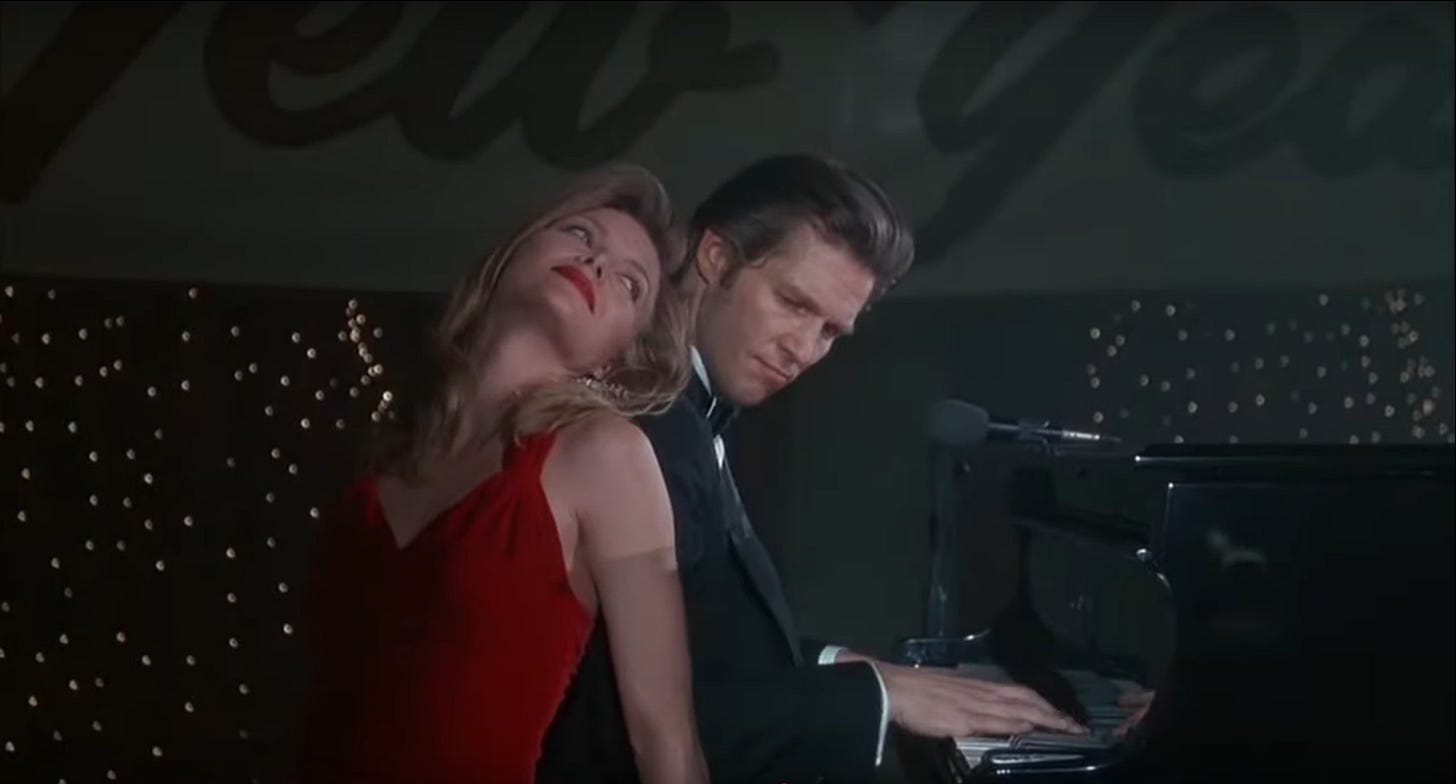
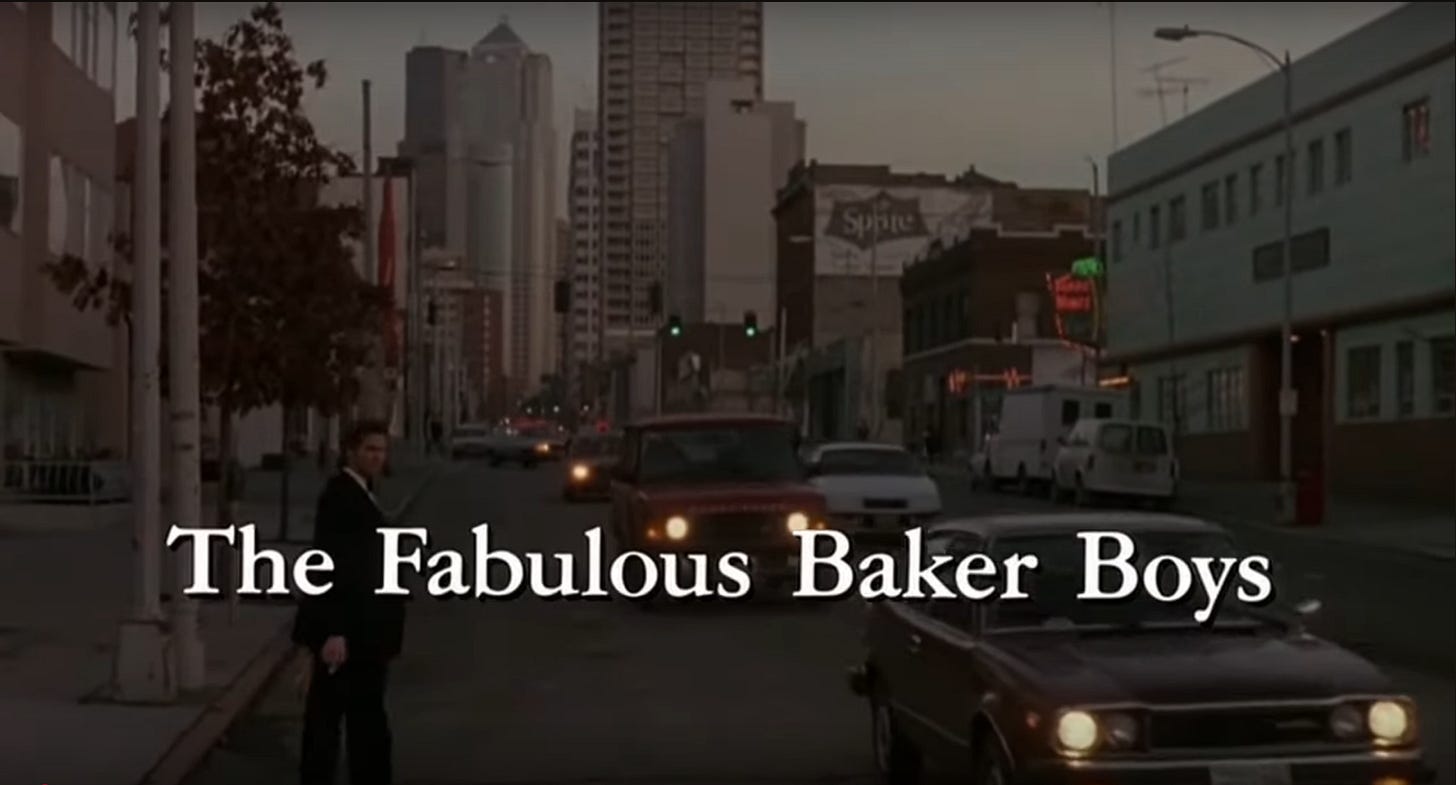
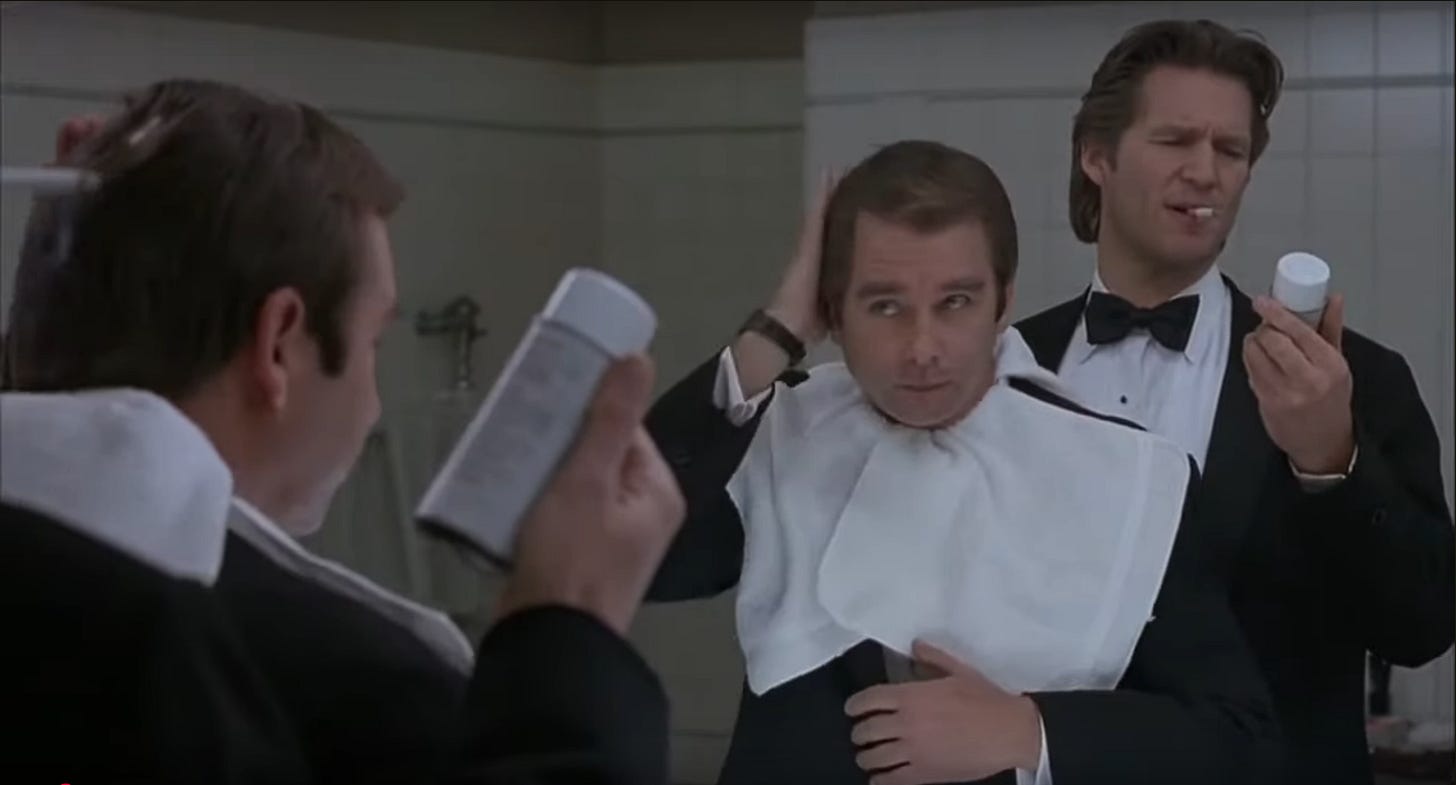


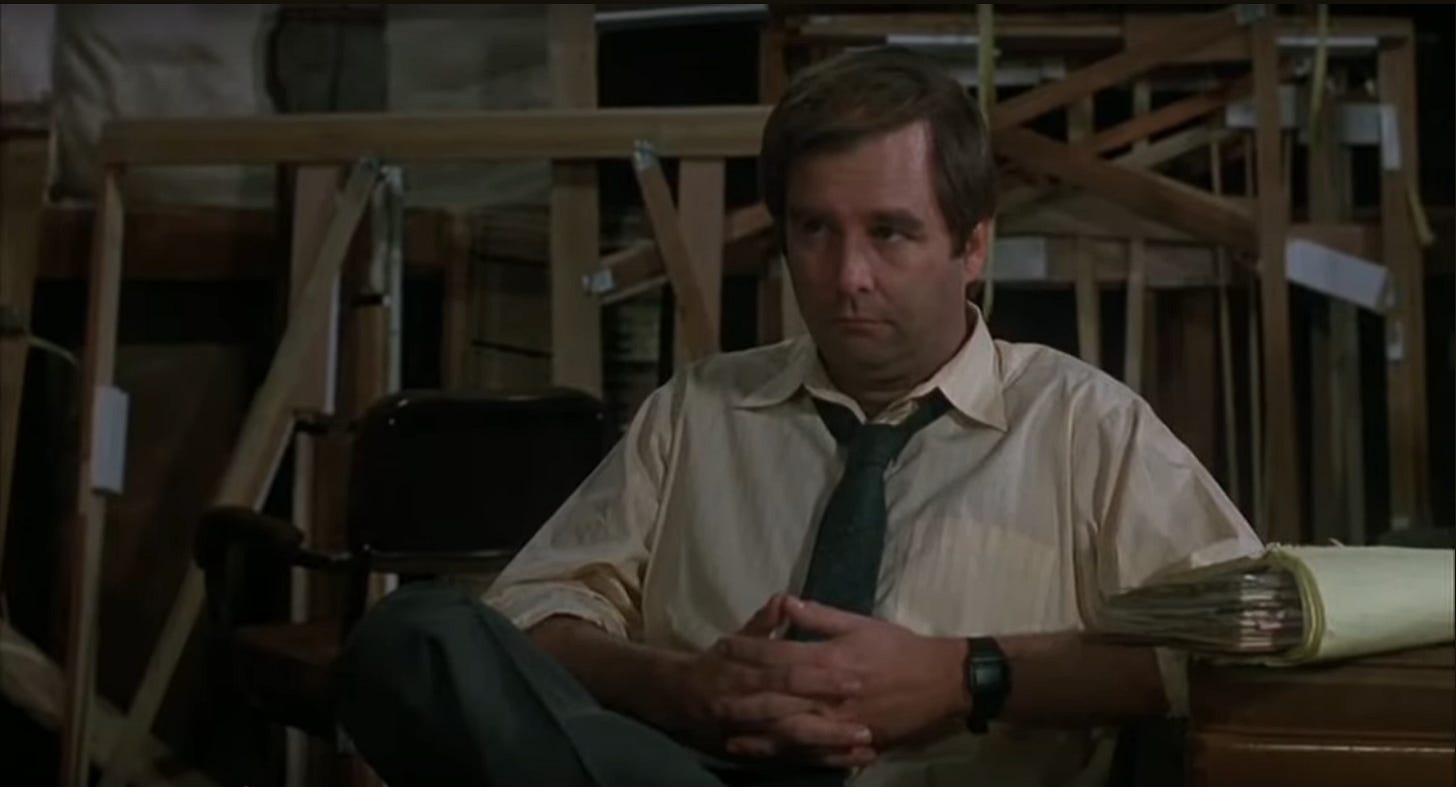
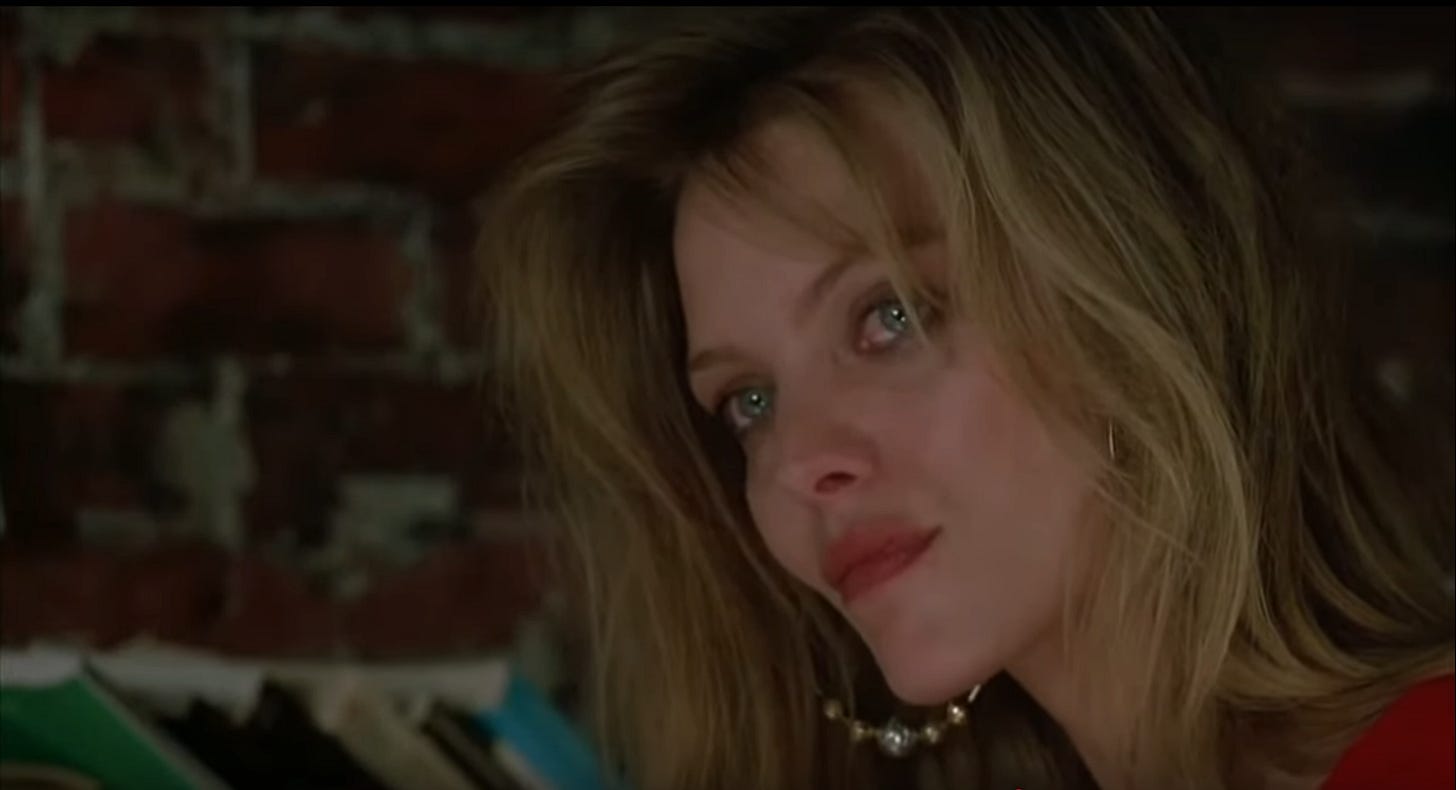
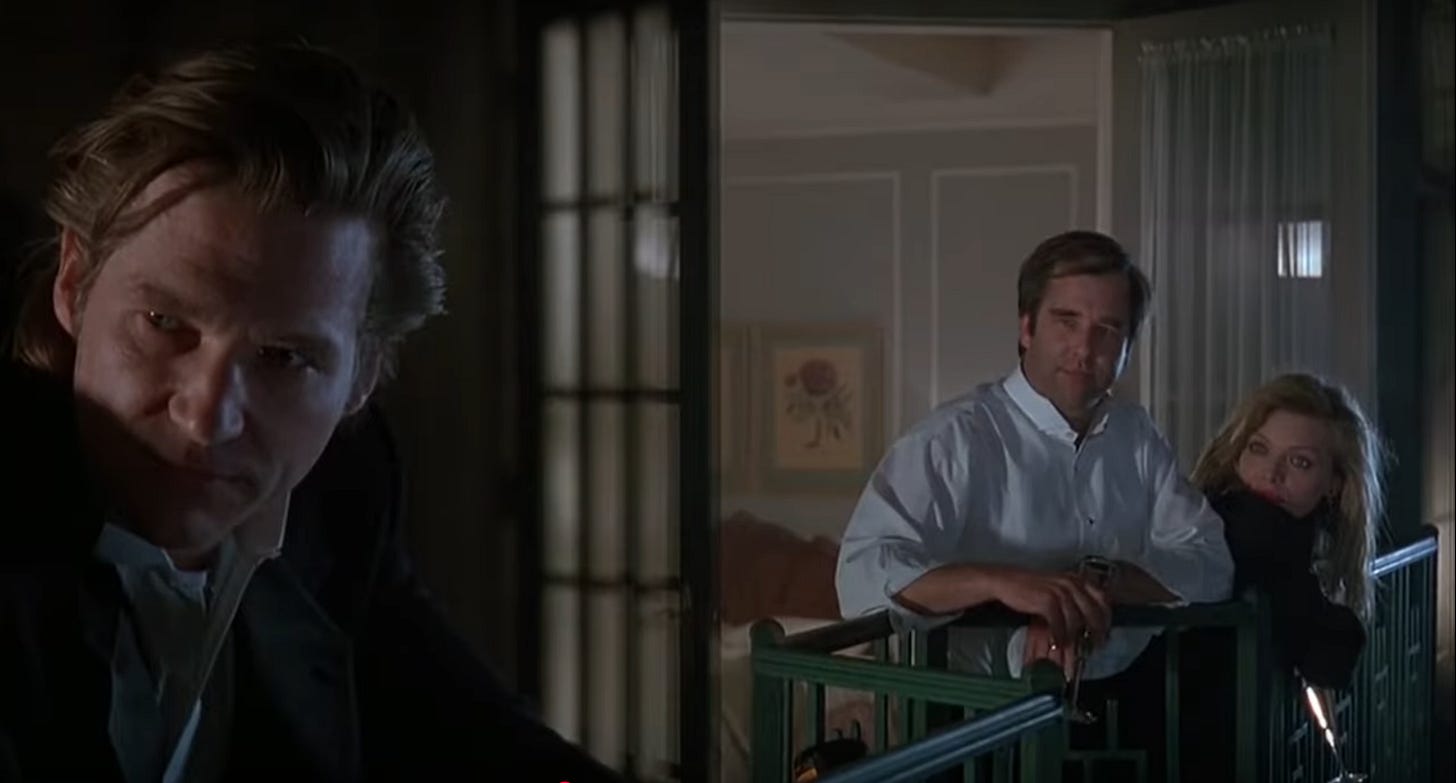



Hey Joe! I remember loving this movie, and as usual, after having seen this movie with the Bridges Brothers and Michelle Pfeiffer, it’s very hard to imagine the Murray Brothers and anyone else but Michelle Pfeiffer in these roles… As always, your background information and insights is just so entertaining! Thank you so much! Peace! CPZ